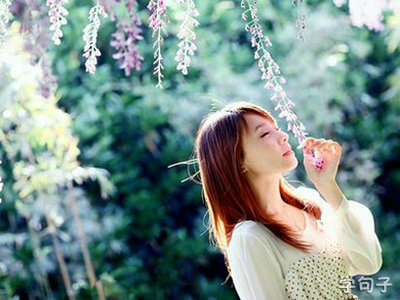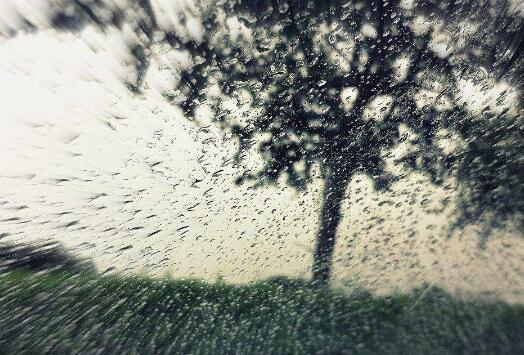
宏村的导游词
各位游客,大家好
我是大家的导游,今天我很荣幸带领大家来浏览宏村。
我们现在正站在宏村的大门口,宏村,它古称弘村,位于黄山西南麓,距黟县县城11公里,是古黟桃花源里一座奇特的牛形古村落。
整个村落占地30公顷,枕雷岗面南湖,山水明秀,享有中国画里的乡村之美称。
这里还是具有代表性的徽派建筑呢
你如果从远处看,宏村就像一个牛的形状。
我们现在要进去,请注意以下事项:不要乱丢垃圾,不要随地吐痰,请保持好宏村的清洁,谢谢
看
我左手的荷花池,是用来排放污水的地方。
这个荷花池是弓箭形的,由于特别设计,脏水不会漫出来,即使下大雨,也不会溢出来。
为了让污水池不那么单调,所以住在这里的人在里面种上了荷花。
每当夏天荷花盛开的时候,都会引来很多的游客来这里看荷花。
我们继续往前走,现在我们正经过的小巷旁边的是一条小溪,是这里人的饮用水,另外还特别规定,8:00以前可以拿这种水洗衣服,以后的时间供人们饮用。
接着我们到以前人住的房子里去看,请大家跟紧队伍,不要走散。
全村现完好保存明清民居140余幢,承志堂三雕精湛,富丽堂皇,被誉 为民间故宫。
宏村的建筑主要是住宅和私家园林,也有书院和祠堂等公共设施,建筑组群比较完整。
各类建筑都注重雕饰,木雕、砖雕和石雕等细腻精美,具有极高的艺术价值,村内街巷大都傍水而建。
接着我们到一户人家的房子里去看一看。
楼上是住女人的,以前的女人不能随随便便地进进出出,所以墙上只有两个大洞,结婚的时候男的看不到女的,但是女的可以看到男的,所以女人自然占了一点小便宜了。
现在请你们往我指的方向看,你看在这么小的门廊上,竟然有古代人民精心雕刻的101个小人,他们精湛的艺术,雕刻出来的小人栩栩如生,个个活灵活现,至今好完好无损。
这难道不是一个奇迹吗
好了,我们游完了中国最美丽的山庄:宏村。
你们说是不是名不虚传啊
现在大家可以自由活动,我们一个小时后在车上集合,再见
西递宏村导游词
Good morning, Ladies and gentleman. Welcome to Huangshan city. First, Id like to introduce myself. My name is XXX . During your stay here, I’ll be your local guide. It’s my honor to be of your service. I’ll try my best to make your stay comfortable. Now, I want to say something about your itinerary. You will be here for about three days. The first day you’ll visit the ancient civilian buildings in Xidi and Hongcun village and you will spend two days enjoying the most beautiful scenery in the Yellow Mountain.Ok, now we are heading for Xidi village, it’s about one hour’s bus ride. On our way to the village, you can enjoy the beautiful scenery in the countryside and I’d like to give you a brief introduction about Xidi village.Xidi village lies in the southeast of Yixian County. It extends 700 meters from east to west, 300 meters from north to south and it covers an area of 16 hectares, with 320 households and 1100 villagers.There is a small river which flows through the whole village, with a hill in front of the village blocking its course, so it flows to the west instead of the east. That’s how Xidi got its name.The topography of Xidi village is well planned. It looked like a sailing boat from the high position. 122 houses, in black, white and gray colors, were built in the 18th and 19th centuries. Each has white walls, with elaborated shaped eaves and courtyards. The design of the streets and lanes are what they used to be, maintaining their ancient style of life and architecture. So in Jan. 2000, it was named by UNESCO as the world cultural heritage. From then on, lots of tourists have come to visit it.An old Chinese saying goes that there will be no town if there is no Huizhou-style building and there will be no business if there is no merchant from Yixian County. Obviously, the Yixian fellows have played an important role in the Huizhou business sector. The successful merchants and high-rank officials gathered enough power and wealth. They came back to build their houses to show their respect for their ancestors and show off their wealth and position. But the strict hierarchy of society was also shown in the construction of household. At that time, only the emperor has the right to build the grandeur building as seen in the Forbidden City. So the merchants could only choose the best materials and plan most sophisticated workmanship to show off their wealth and position. In Xidi village, you can see many examples of fine stone carving, wood carving, bamboo carving and brick carving in doors and windows.Ok, here we are. Let’s get off the bus and bring your camera. The first sight that comes to us is a high archway---- the Archway of Hu Wenguang, the only survival of nine archways from the Cultural Revolution. This archway was built in the Ming Dynasty to reward Hu’s devoted service and efforts for the public interest. Hu Wenguan, once being a high-ranking official like the governor of our province, was a native of this village. This archway is a fine example of stone carvings.Now we shall go to the second stop---Hongcun village, about half an hour’s bus ride from here. Compared with Xidi village, Hongcun village is more primitive, not so commercial. Because the place is full of beautiful scenery, Hongcun Village has always enjoyed the name a village in the Chinese painting. Now can I ask you a question? Have you enjoyed the film Crouching Tiger, Hidden Dragon? Some of the scenes are shot in this village. The most fascinating thing about this village is its design. It was designed and constructed in the shape of a buffalo. The Leigang Hill at the west end is like a buffalo’s head, with two big trees (one maple \\\/poplar and one ginkgo, both are more than 500 years old) at the entrance like two horns, four stone bridges across the Jieyang River are like the four legs of the buffalo, the blocks of ancient houses in the village make up the body, while a long stream of 1000 meters winding among the houses is just like the bowel of the buffalo, a pond in the shape of a half-moon is the stomach, and a larger pool in the south of the village (Nanhu Lake) is the belly of the buffalo. The local people used their industry and intelligence to design and construct such a buffalo-shape village.The village started to take shape 800 years ago when the ancestor moved from other villages after heavy losses from fire. So from the very beginning, the villagers have been conscious of making water supply handy to each family in case the wood- structured house caught fire again. Now people will find a water canal running along every residence.The village still preserves over 140 dwelling houses from the Ming and Qing dynasties, all in excellent condition. All the buildings have exquisite carvings and are magnificent symbols of its time. Among them, Chengzhi Hall, which is regarded as the “countryside palace museum, is a typical representative of ancient Hui-style residence by a rich merchant Wang Dinggui. Now, dear friends, seeing is believing. Now we are arriving at the Hongcun village. I am sure you will be impressed by the beautiful scenery in the small village. Come on, let’s go and enjoy it.Thank you.
皖南古村落的导游词300字
嗨,大家好,我是北京旅行社的导游,我叫陈子杉,大家可以叫我小陈或陈导。
今天很高兴能担任大家这次神秘旅行的导游。
请大家注意一些事情。
首先,你不能打扰住在这里的居民,要不然你们的票票就要飞喽!其次,在许多未列入参观范围的明清民居中,如果你跟居民打招呼,你就可以到他的家里去玩。
大家知道吗
宏村位于安徽省东北部,始建于南宋绍熙年间(公元1131年),至今800余年。
它背倚黄山余脉,云蒸霞蔚,恰似山水长卷,融和人文景观为一体,被誉为“中国画里的乡村”。
2000年11月30日,被列入了名录。
全村现保存完好的明清古民居有140余幢。
宏村是中国古代依据仿生学建造的,整个村落呈“牛”型结构布局——“山为树为角,桥为四蹄屋为身”,被誉为当今文化遗产的一大奇迹。
那巍峨苍翠的雷岗当为牛首,参天古木是牛角,由东而西错落有致的民居群宛如宠大的牛躯。
以村西北一溪凿圳绕屋过户,九曲十弯的水渠,聚村中天然泉水汇合蓄成一口斗月形的池塘,形如牛肠和牛胃。
水渠最后注入村南的湖泊,鹆称牛肚。
人们又在绕村溪河上先后架起了四座桥梁,作为牛腿。
历经数年,一幅牛的图腾跃然而出。
这种别出心裁的科学的村落水系设计,不仅为村民生产、生活用水提供了方便,更创造了一种“浣汲何妨汐路远,家家门前有清泉”的良好环境。
宏村依山伴水而建,村后以青山为屏障,地势高爽,可挡北面来风,既无山洪暴发冲击之危机,又有仰视山色泉声之乐。
八九百年前的建村者便有先建水系后依水系而建村的前瞻,所以使它有了水一样的灵性,这也正是它比其他徽派建筑的村落更具魅力的原因。
今天的旅行就到这里,你们的满意是我最大的成功。
你们的快乐是对我最大的回报。
写一篇关于汪氏宗祠的导游词
汪氏宗祠(鲁越传芳),浙江省淳安县姜家镇郭村岐山庄口村,门前有鉴湖。
六十一世得罗为姜家郭村岐山汪氏始祖,始建明万历年间。
郭村汪氏是始祖,在姜家周边村庄有98%是岐山汪氏的分支,祖谱记载每正月各地支系子孙都来祠堂搞活动。
主要有祀祖、唱戏、竹马及交流。
时间在三天三夜。
在明万历年间所订族规十六条:1、乡约当尊;2、祠墓当展;3、族类当辨;4、名分当正;5、宗族当睦;6、谱牒当重;7、闺门当肃;8、蒙养当豫;9、姻里当厚;10、职业当勤;11、赋役当供;12、争讼当止;13、节俭当崇;14、守望当严;15、邪巫当禁;16、四礼当行。
随便哪处中国的世界遗产导游词
1。
大家好
今天我们来到的是皖南古村落之一-----宏村,它是一个“奇特的牛型村落”,2000年与西递村同时金榜提名,荣登世界文化遗产宝座。
它始建于南宋,已有800多年历史。
为徽州第一大姓氏汪氏子孙聚族而居的地方。
2。
1997年10月世界建筑大师贝聿铭先生专程来宏村参观,他对这里的古建筑和古水系设施等评价极高,并在承志堂内挥笔题词:“黟县宏村古建筑物是国家的瑰宝”。
2000年,国际古遗址专家大河直躬在考察宏村后评价:“青山绿水本无价,白墙黑瓦别有情”。
2001年5月20日,原中共中央江总书记参观完宏村后,给予了极高的评价,将徽州历史文化建筑医学等归纳为五个英文字母:CBMDA。
C=Culture,B=Business,M=Medicine,E=Education,A=Archtecture(注:指文化、商业、医学、教育、建筑)。
2000年11月30日,宏村在第24届世界遗产委员会上正式确定为世界文化遗产,2001年又被确定为国家级重点文物保护单位、安徽省爱国主义教育基地。
2002年12月30日加入中国风景名胜区协会,2003年3月加入中国风景名胜区协会世界文化遗产工作委员会,2003年7月,被正式评为国家级4A景区,2003年12月被评为全国首批历史文化名村。
2005年,宏村被评为中国最具魅力名镇。
2006年,宏村景区被评为安徽省文明风景区。
2006年,宏村景区被评为“中国最美的村镇”。
3。
宏村的选址、布局,宏村的美景都和水有着直接的关系,是一座经过严谨规划的古村落。
村内外人工水系的规划设计相当精致巧妙,专家评价宏村是“人文景观、自然景观相得益彰,是世界上少有的古代有详细规划之村落”。
被中外建筑专家称为“中国传统的一颗明珠”、“研究中国古代水利史的活教材”。
宏村被誉为“中国画里的乡村”,联合国专家称赞它为“举世无双的小城镇水街景观”。
因为它背倚黄山余脉羊栈岭、雷岗山等,地势较高,有时云蒸霞蔚,如浓墨重彩,有时似泼墨写意,四周山色与粉墙青瓦倒映湖中,人、古建筑与大自然融为一体,好似一幅徐徐展开的山水画卷。
水在宏村的选址中作用重大。
相传宏村的汪氏祖先先后在歙县唐模、黟县奇墅湖村居住,但都曾遭遇火灾。
后来汪氏举家迁到雷岗山下,最初建十三楼,取名弘村,取弘广发达之意。
鉴于以往教训,宏村在规划时十分注重人工水系的安排,提高预防火灾的能力,后历经400余年、几代人的努力,特别是明永乐年间宏村76世祖汪思齐请风水先生勘定环境,对建筑重新布局,宏村的设计、构造最终实现。
在村落的科学布局中,水起着重要的作用。
整个村落采用仿生学的“牛”形布局,以雷岗山为牛头,村口的两株古树为牛角,月沼为牛胃,南湖为牛肚,蜿蜒的水圳为牛肠,民居建筑为牛身,四座古桥为牛脚,称作“山为牛头树为角,桥为四蹄屋为身”,形状惟妙惟肖,整个村落就像一头悠闲的水牛静卧在青山绿水之中。
宏村有着一套完善的供水系统,水系设计科学又别出心裁。
村民们将村西的河水引入村内,开凿了一条近1米宽的水圳,九曲十弯,为各家各户提供生活用水,同时也起到调节气温和美化环境等作用。
水圳在村的中部形成半月形的月沼,又在南部形成弓形的南湖,构成了宏村独特的风貌。
村内外人工水系规划,体现了人类巧用自然资源的智慧,可以说是节约型社会利用可再生资源的典范。
水在村内建筑中也不可或缺。
宏村建筑主要是住宅和私家园林,也有书院和祠堂等公共设施,建筑组群比较完整。
村内街巷大都傍水而建,民居也都围绕着月沼布局,住宅多为二进院落,有些人家还将水圳引入宅内,形成水院,开辟了鱼池,营造出“门外青山如屋里,东家流水入西邻”的天人合一的生活环境,可以说,宏村是水做的宏村,宏村也因有水,显得格外有灵气。
比较典型的建筑有承志堂、南湖书院、乐叙堂、叙仁堂等,数百户粉墙青瓦、鳞次栉比的古民居群,构成一个完美的建筑艺术整体。
宏村的兴盛与衰落都和徽商及徽文化的兴衰密切相关。
南宋以前,宏村是“幽谷茂林,路径茅塞”地带,南宋绍熙年间(公元1131年)宏村建立,明清时徽商的崛起为宏村的辉煌提供了有力的经济基础,至明万历年间,宏村楼舍高低错落,人口繁衍,“烟火千家,森然一大都会矣。
”但是清朝中后期以后,宏村随着徽商的衰落而渐渐衰落。
考察其原因主要有三点: 一是清末咸丰同治年间,徽州十年战乱的打击;二是1840年鸦片战争后,徽商经营的手工业品敌不过外商机器生产的商品,同时道光取消了盐业专卖制度,给经济主体是盐业的徽商带来巨大损失。
这两点是客观原因。
第三点是徽商自身的主观原因。
在内忧外患的时局下,徽商受传统观念的束缚,极少把资本投入到扩大再生产中去,而有的商帮能够紧跟时代步伐,如洞庭商人近代适时进入买办业、金融业,并兴办丝绸、绵纱等实业,开辟出新的天地。
而徽商却未能与时俱进,仍然在传统行业中苟延残喘,最后只能被历史所淘汰。
宏村枕山、环水、面屏,北有雷岗可抵御北面之风,东南面有长年不息的山溪河流。
不同季节、不同气候景色各不相同,人、建筑、山水相融,“天人合一”,人在画中游,是人和自然结合的光辉典范。
几百年前,这里就构建了和谐的社会。



